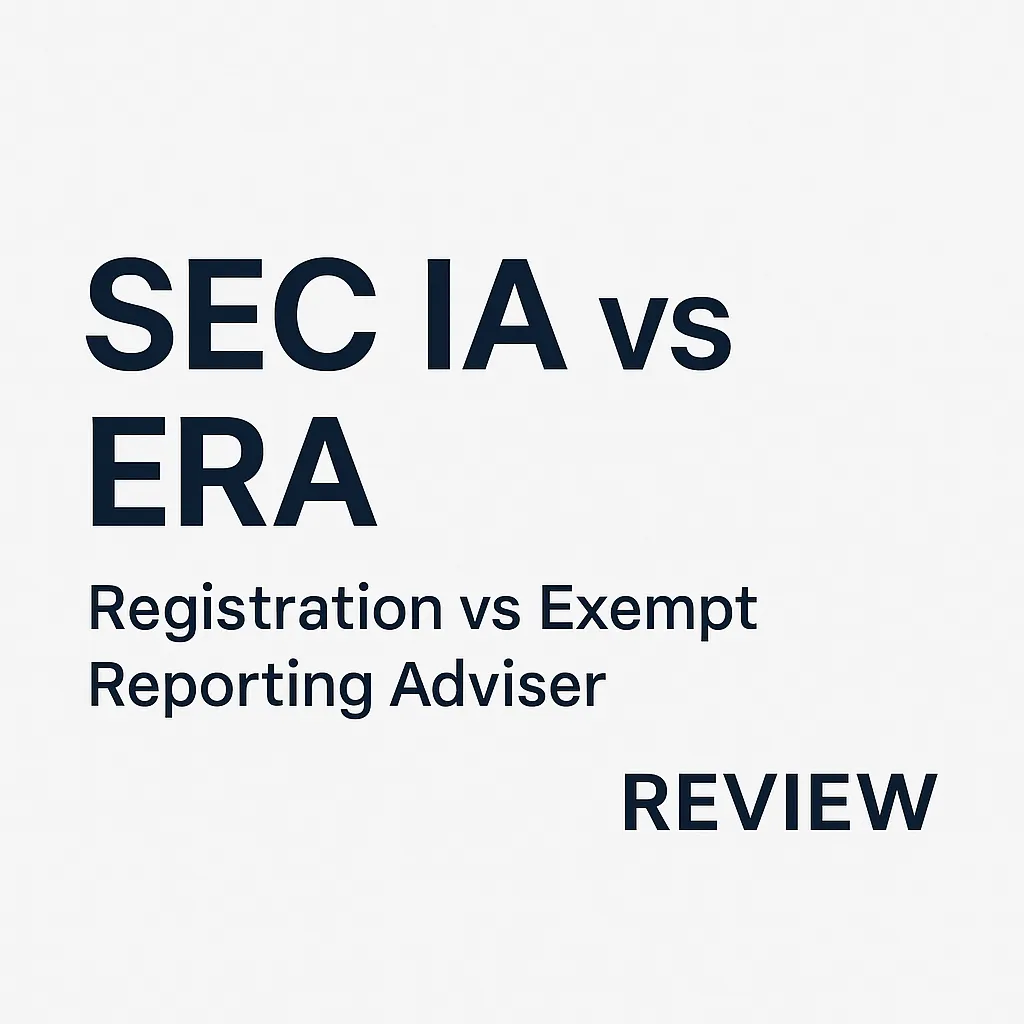 BrokerHiveX
BrokerHiveX BrokerHiveX
BrokerHiveX BrokerHiveX
BrokerHiveXSummary:This guide comprehensively explains the differences between SEC investment advisor registration (RIA) and the ERA exemption, covering fees, requirements, procedures, and investor protections. Learn the core differences between SEC IA and ERA, master Form ADV query techniques, and help investors identify compliant advisors and potential risks.

The U.S. Securities and Exchange Commission (SEC) has established two paths under the Investment Adviser (IA) system:
Fully registered (RIA, Registered Investment Adviser)
Exempt Reporting Adviser (ERA)
For investment advisory firms and fund managers, the choice between registration and filing not only impacts compliance costs but also determines the depth of regulation and investor trust. This article systematically compares the requirements, fees, processes, and investor protection mechanisms for registration and filing to help readers understand the differences between the two.
Registered Accountant (RIA)
Basis: Investment Advisers Act of 1940
Regulated: Consulting firms with assets under management (AUM) ≥ US$100 million
Obligations: Full registration, periodic inspections, and submission of Form ADV Part 1 & 2
Exemption Recordation (ERA)
Private Fund Adviser Exemption (Rule 203(m)-1)
Venture Capital Adviser Exemption (Rule 203(l)-1)
Legal Basis: Exemptions from the Dodd-Frank Act 2010
Two types of exemptions:
Supervision: Only a simplified version of Form ADV is required. No full inspection is required.
| Conditional Dimension | RIA Full Registration | ERA exemption filing |
|---|---|---|
| Assets under management | ≥ US$100 million (≥ US$250 million in some cases) | There is no strict lower limit, but it must meet the definition of private equity or venture capital advisor |
| Customer Range | Public funds, institutional clients, and retail clients | Only private equity or venture capital fund investors |
| Compliance Officer | A Chief Compliance Officer (CCO) is required | Existing senior executives can concurrently hold the position |
| Audit obligations | Required to undergo annual audit by PCAOB certified public accountants | No mandatory annual audit requirements |
| Disclosure Documents | Form ADV Part 1 & 2 | Form ADV Part 1A (simplified) |
Registered Accountant (RIA)
Application Fee: $150 – $1,100 (varies by state/size)
Annual renewal: $300 – $1000
Compliance consultant fees: $20,000–50,000 per year
Audit fees: $20,000–$100,000 per year
Exemption Recordation (ERA)
Application Fee: 0 – 30,000 USD (in most cases only the IARD system filing fee)
No audit fees
Significantly reduced compliance costs (typically < $5,000 per year)
Prepare Articles of Association, Compliance Manual, KYC/AML Policy
Submit Form ADV Part 1 & 2 in the IARD system
Pay the registration fee
Undergo initial SEC review (30–90 days)
Post-approval ongoing compliance reporting
Submit Form ADV Part 1A (simplified version) at IARD
The exemption (203(m)-1 or 203(l)-1) relied upon
No SEC review required, only filing required
Update filing information annually
RIA Advisors :
Investors can query the advisor’s complete history (fees, disciplinary actions, team information) through the IAPD system
Accept SEC periodic inspections, lower probability of violations
ERA Consultants :
Only limited information is provided, making it difficult for investors to fully assess the advisor's background
The SEC only intervenes during spot checks or reports, leaving investor protection weak.
Q1: Are ERA advisors completely unregulated?
A: No. ERA advisors are still subject to some provisions of the Investment Advisers Act, but are not subject to full inspection.
Q2: Can ERA Advisors sell products to retail investors?
A: No. ERA advisors can only work with private equity funds or venture capital funds .
Q3: How can I tell if a consultant is trustworthy?
Answer: Investors are advised to check the IAPD or SEC EDGAR system to verify their Form ADV information.
To consulting firms :
If you have a large management scale and a variety of client types → RIA full registration is more suitable
If you only manage private equity/venture capital funds → ERA exemption filing, lower costs
For investors :
Choosing an RIA advisor is safer because of the depth of regulation.
If considering ERA advisors, pay extra attention to fund structure, past performance, and risk disclosure.
Transparency: 8/10 – RIA is transparent, ERA is only partially transparent
Compliance Costs: 6/10 – High for RIAs, Low for ERAs
Investor Protection: 9/10 – Strong RIA Investor Protection
Flexibility: 7/10 – ERA is more flexible and has fewer registration requirements
International Recognition: 8/10 – RIA advisors have a stronger international reputation
BrokerHivex is a financial media platform that displays information sourced from the public internet or uploaded by users. BrokerHivex does not endorse any trading platform or instrument. We are not responsible for any trading disputes or losses arising from the use of this information. Please note that the information displayed on the platform may be delayed, and users should independently verify its accuracy.